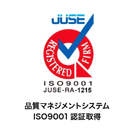Financial statements can be manipulated when a cost is wrongly capitalized or expensed. If a cost is incorrectly expensed, net income in the current period will be lower than it otherwise should be. If a cost is incorrectly capitalized, net income in the current period will be higher than it otherwise should be. A short-term or long-term asset that is not used in the day-to-day operations of the business is considered an investment and is not expensed, since the company does not expect to use up the asset over time. On the contrary, the company hopes that the assets (investment) would grow in value over time. Short-term investments are investments that are expected to be sold within a year and are recorded as current assets.
In accounting, capitalization is an accounting rule used to recognize a cash outlay as an asset on the balance sheet rather than an expense on the income statement. In finance, capitalization is a quantitative assessment of a firm’s capital structure. Here it refers to the cost of capital in the form of a corporation’s stock, long-term debt, and retained earnings. An amount spent is considered a current expense, or an amount charged in the current period, if the amount incurred did not help to extend the life of or improve the asset.
When to Capitalize vs. Expense a Cost?
In addition, R&D expenses are nearly always expensed for accounting purposes. In terms of repair costs, maintenance-type repairs are considered an expense, since they only restore the item’s value to normal and don’t increase its lifespan above normal. This means that items, which could potentially be capitalised, are expensed only if they don’t significantly distort the bottom line in the balance sheet. This means the expenses in question don’t represent a large part of your total expenses and therefore, wouldn’t drag your income artificially low. You also need to keep in mind that capitalizing an asset can overinflate the assets shown on the company’s balance sheet. The main reason most countries don’t allow the capitalizing of R&D costs is to do with the uncertainty of the benefits.
While the above method can be used to tweak your company’s financial statement, you don’t want to be overly aggressive with your accounting tactics. Typically only costs, which have no long-term benefit or which don’t directly increase the value of the asset substantially, are expensed. These are non-monetary resources, which have no physical substance yet still provide the company a benefit. These could be items such as research and development costs or patents and copyrights. In many instance, fixed assets are typically capitalised, as they continue to provide benefits for the company for a longer period. Certain costs to the company will only provide a one time value for the company and therefore belong to the second group.
- CFI is the official provider of the Commercial Banking & Credit Analyst (CBCA)™ certification program, designed to transform anyone into a world-class financial analyst.
- The fee a company pays to a software vendor can also include services not included in the license, like upgrades or software support.
- Additionally, if a manager wants to purposefully make their profitability appear better in later years, they may opt to expense costs right away.
- The above should have given you a deeper insight into the appropriate use of these methods.
Why are the costs of putting a long-term asset into service capitalized and written off as expenses (depreciated) over the economic life of the asset? Liam plans to buy a silk-screening machine to help create clothing that he will sell. The machine is a long-term asset, because it will be used in the business’s daily operation for many years. Overall, in determining a company’s financial performance, we would not expect that Liam should have an expense of $5,000 this year and $0 in expenses for this machine for future years in which it is being used. GAAP addressed this through the expense recognition (matching) principle, which states that expenses should be recorded in the same period with the revenues that the expense helped create. In Liam’s case, the $5,000 for this machine should be allocated over the years in which it helps to generate revenue for the business.
These are typically expensed costs because the business won’t enjoy future benefits through them. The importance of capitalizing costs is that a company can get a clearer picture of the total amount of capital that has been deployed on assets. It helps the company’s https://www.quick-bookkeeping.net/what-is-form-8941-its-a-tax-credit-for-small/ management measure the amount of profits earned over time in a more meaningful way. It is important to note that costs can only be capitalized if they are expected to produce an economic benefit beyond the current year or the normal course of an operating cycle.
Capitalize vs. Expense – Impact on Net Income
However, the $500 will be recognised in the statement in the following few years as depreciation expense. In case the company decides to expense the $500, it will be added to the company’s total expenses. Expensing the cost will also mean total assets and the shareholder’s equity will be lower. There are currently only guidelines to help businesses decide which costs could be capitalised and which could be expensed.
If a cost is capitalized instead of expensed, the company will show both an increase in assets and equity — all else being equal. All expenses incurred to bring an asset to a condition how many sales do you need to break even where it can be used is capitalized as part of the asset. They include expenses such as installation costs, labor charges if it needs to be built, transportation costs, etc.
Create a free account to unlock this Template
Routine repairs such as brake pad replacements are recorded as repair and maintenance expense. For example, if a supercharger is added to a car to increase its horsepower, the car’s performance is increased, and the cost should be included as a part of the vehicle asset. Likewise, if replacing the engine of an older car extends its useful life, that cost would also be capitalized. While the rule of thumb for capitalizing is whether the asset has long-term benefit or value increase for the company, there are certain limitations to this rule.
Instead of expensing costs as they occur, they may be depreciated over time as the benefit is received. In finance, capitalization refers to the financing structure and sourcing of funds. In accounting, the matching principle requires companies to record expenses in the same accounting period in which the related revenue is incurred. For example, office supplies are generally expensed in the period when they are incurred since they are expected to be consumed within a short period of time. However, some larger office equipment may provide a benefit to the business over more than one accounting period.
Upgrading to a paid membership gives you access to our extensive collection of plug-and-play Templates designed to power your performance—as well as CFI’s full course catalog and accredited Certification Programs. For the past 52 years, Harold Averkamp (CPA, MBA) has worked as an accounting supervisor, manager, consultant, university instructor, and innovator in teaching accounting online.
Therefore, inventory cannot be capitalized since it produces economic benefits within the normal course of an operating cycle. Accumulated depreciation and amortization represent a contra-asset account that is meant to reduce the balance of the capitalized asset. Depreciation and amortization also represent expense items on the income statement. Although they both represent an outflow of cash, their accounting treatment is significantly different – in order to reflect the substance of the costs. Accrual-based accounting differs from cash-based accounting, where both types of costs are treated the same, and changes on the financial statements only reflect the movement of cash. This is similar to GAAP treatment where certain costs should be capitalized and depreciated or amortized over their useful life and others should be a current expense.













